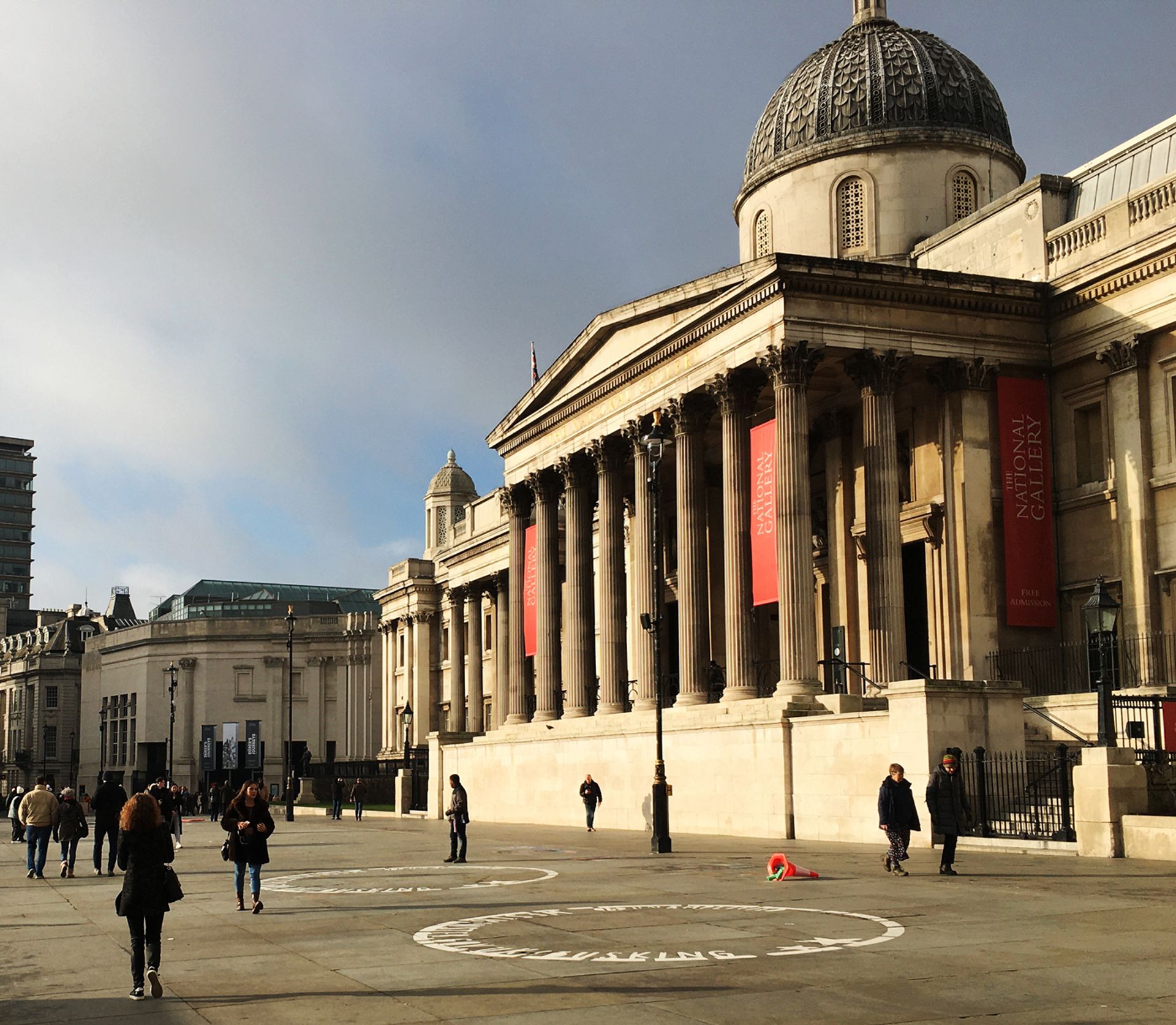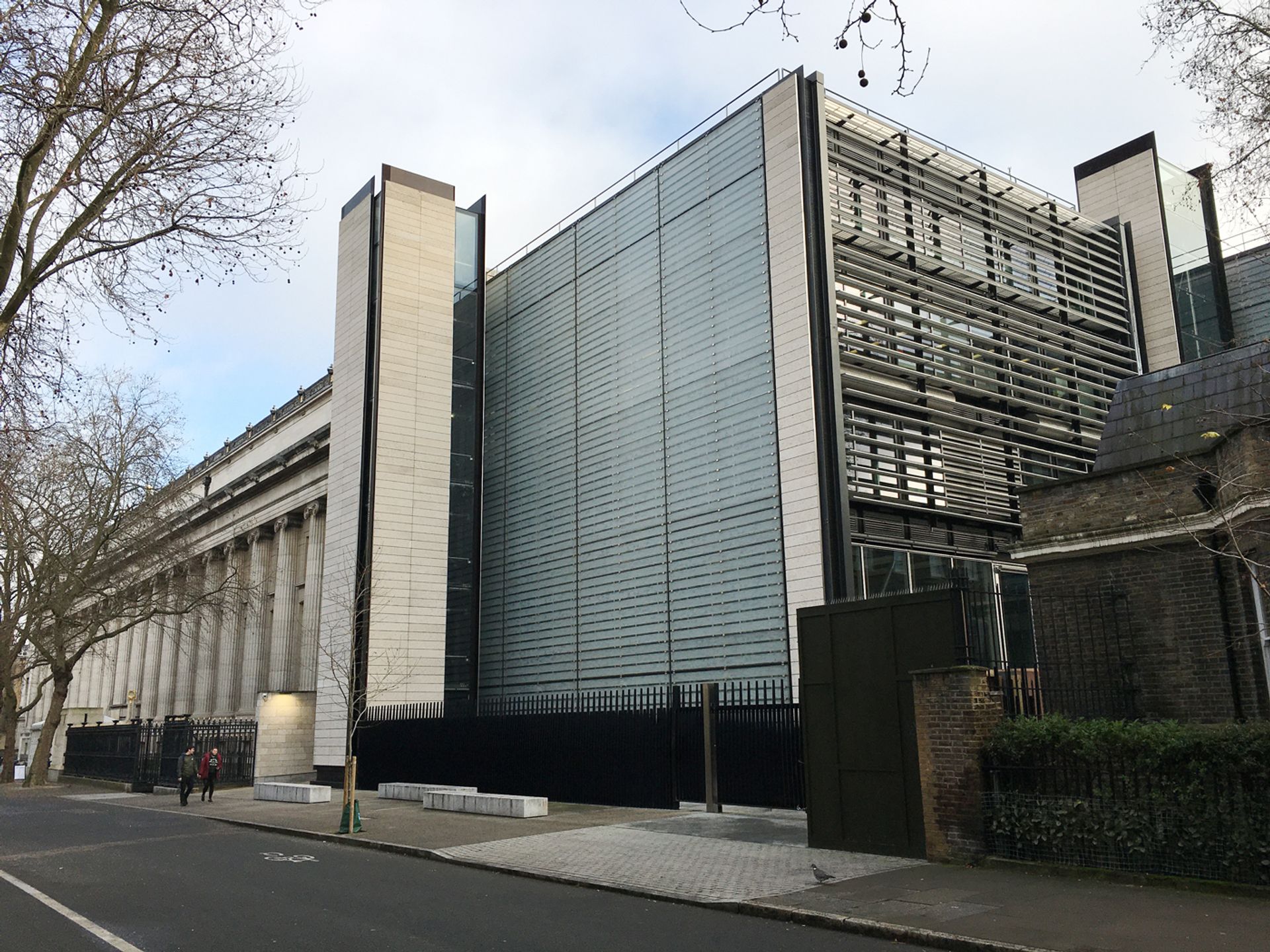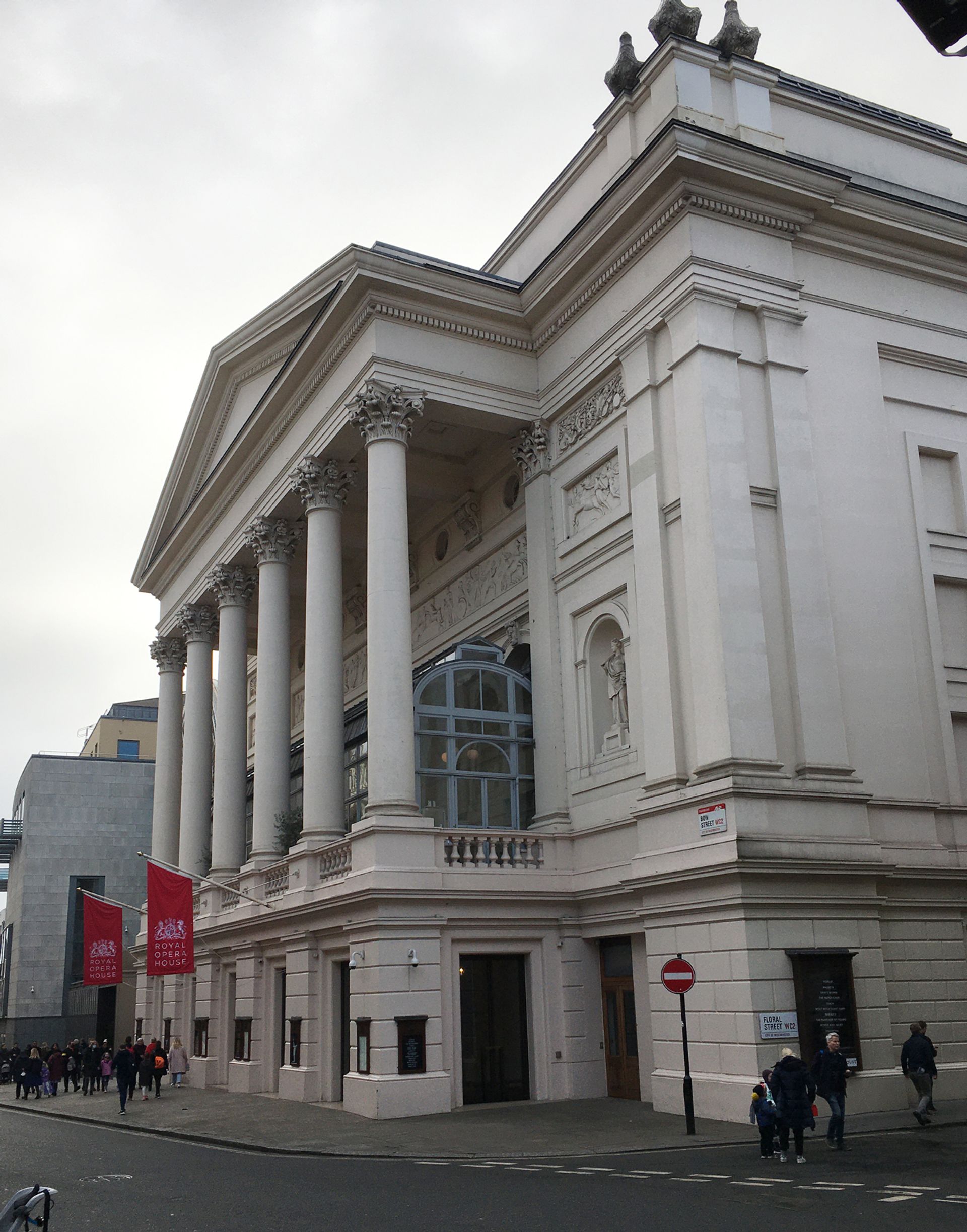John Sainsbury, who has died aged 94, was one of the most generous, and effective, philanthropic supporters of the arts in Britain for the past half-century.
Through grants given by their Linbury Trust—and by providing advice and personal support that extended well beyond the financial—Sainsbury and his wife, Anya Linden, played an important part in the refurbishing or expansion of an extraordinary number of institutions: London's National Gallery, Tate Britain, British Museum, Dulwich Picture Gallery, Museum of London and Royal Opera House, and Oxford's Ashmolean Museum. They also helped to fund the rescue of the filmmaker Derek Jarman's cottage at Dungeness. The trust has given hundreds of millions of pounds to the arts since making its first grant in 1973, and even more to education, the environment, medicine and projects in developing countries.
Sainsbury, then chairman and managing director of Britain's largest supermarket chain, Sainsbury's, first made headlines in the art world when he and his brothers, Simon and Timothy, announced in April 1985 that they would personally fund, at an estimated cost of £33m, the long-anticipated extension to the National Gallery in London.
Their offer came as a terrific grand geste after years of controversy over how the National Gallery, chronically short of exhibition space, should be extended into an area to the west of the main building, the Hampton Site, which had been used as a car park for the previous 40 years.
The government had acquired the plot in 1958, but matters had hung fire until 1981 when Michael Heseltine, the Secretary of State for the Environment, announced a competition to design an extension on the site. This was won in the following year by the British practice Ahrends, Burton and Koralek (ABK). In May 1984, the Prince of Wales famously described the ABK design as a "monstrous carbuncle on the face of a much-loved and elegant friend", and, after months of public debate, it was refused planning permission.
John Sainsbury and his brothers then stepped in to revive the project by offering to fund the extension, and to find a new architect with the museum's trustees. Their donation meant that, unlike with the 1981 government competition, there was no need to include commercial office space to defray costs. The resulting building, designed by Robert Venturi and Denise Scott Brown, and home to the gallery's collections of European art before 1500, was opened to general acclaim in July 1991.

The Sainsbury Wing (left) was added to the National Gallery in London, 1991, by Robert Venturi and Denise Scott Brown. It was paid for by Sainsbury and his brothers Simon and Tim Louis Jebb
It was Sainsbury's finest hour. He, his brothers and Jacob Rothschild, the chairman of the gallery's trustees, escorted the Queen through the opening ceremony. Sainsbury had been chairman of the family business for 23 years—he stepped down the following year at the age of 65—a period in which the Sainsbury's brand had become a byword for quality, scale and profitability. He and his brothers had floated the company on the stock exchange in 1973, at a then record valuation, but had retained firm family control over the business thereafter.
In 2000, The Art Newspaper asked Sainsbury why his family had stepped in at the National Gallery. "It was a feeling of frustration and shame," he said, "that our nation could not do what it was so manifestly obvious it should have done for the National Gallery that prompted my brothers and myself to intervene. But we should not have had to. The state of mind in those days was that if the government did not do something, nobody else could."
It was a feeling of frustration and shame that our nation could not do what it was so manifestly obvious it should have done for the National Gallery that prompted my brothers and myself to intervene. But we should not have had to.John Sainsbury
Asked to name his finest achievement, Sainsbury answered: "That I led the family business to be as successful as it was. If I had failed in doing that then the Linbury Trust would not have had the money to give away, the Sainsbury Wing would not exist, and the Royal Opera House and other projects I supported would not have had my help."
Four generations of grocers
John Sainsbury was a member of the fourth generation to run the family grocery business, founded in 1869 by his great grandfather John James Sainsbury at 173 Drury Lane, Covent Garden, on the corner with Macklin Street. "JD" Sainsbury, as he became known in the business, was the son of Alan Sainsbury—chairman of the company from 1956 to 1967—and was educated at Stowe School, Buckinghamshire, and Worcester College, Oxford, where he read modern history.
He joined the family business in 1950, becoming a director in 1958, and then vice-chairman in 1967, before becoming chairman in 1969 in succession to his uncle Robert Sainsbury (a celebrated collector and founder of the Sainsbury Centre for Visual Arts at the University of East Anglia, rich in works by Alberto Giacometti, Henry Moore and Francis Bacon).
In 1963, John Sainsbury married Anya Linden, a dazzling principal ballerina at the Royal Ballet. They had a daughter and two sons, and life was divided between a house in South Kensington and Ashden House in Kent, designed by Hugh Casson and overlooking Romney Marsh, with winter holidays in the Caribbean in later years. In 1979 they moved from Ashden to Preston House, Preston Candover, in Hampshire, where they did great work replanting the park and garden, adding to and rationalising the farming estate, and bringing new life to the late-17th century house. Sainsbury amassed in time a substantial collection of contemporary and Modern pictures with some fine 18th- and 19th-century pieces mixed in.
Sainsbury was an authoritative figure, with a sophisticated appreciation of what it took to be taken seriously in public life. With his many business and charitable responsibilities he was known affectionately to some of his friends simply as "The Chairman". He and the elegant, witty, warm-hearted Anya made a wonderful combination, fizzing with energy, the glass always half-full, the next adventure eagerly anticipated. And Sainsbury's natural habit of command was tempered by his great enthusiasm for the job at hand, for art and history, and by his huge and completely unaffected smile, which was usually accompanied by eyes wide open with owlish delight.
I was lucky enough to be asked by him to write an architectural and social history of Preston House, and the catch-up meetings, to share latest discoveries in the local archives or the records of Chancery, were always something to look forward to. He might share our conclusions with Harry Pitt, his old history tutor at Oxford. It was one of the most impressive sides to Sainsbury that he took great care with family occasions and family matters and with maintaining friendships from school or university years.
An eye for detail
Part of his effectiveness as head of Sainsbury's had been his eye for detail. Not only did he approve every new variation of their own-brand groceries but he gave the most detailed attention to the display of goods in the company's shops, sometimes appearing unannounced at a Sainsbury's branch to check on how produce was positioned on the shelf, to the last millimetre. And it was as a wise counsellor, and streetwise manager with a genuine sense of wonder, that he added so much personal value to the institutions that he supported financially, including those at Oxford, his alma mater.
Asked to name his finest achievement, Sainsbury answered: "That I led the family business to be as successful as it was. If I had failed in doing that then the Linbury Trust would not have had the money to give away, the Sainsbury Wing would not exist, and the Royal Opera House and other projects I supported would not have had my help".
When the Ashmolean Museum in Oxford was reopened in November 2009 after a huge programme of works, at a cost of £60m, the museum's chairman, Nicholas Barber, thanked Sainsbury for the Linbury Trust's generosity in making the largest private donation—reflected in the naming of the John Sainsbury Galleries—but also for being "the project’s godfather... [providing] in the words of a special plaque near the entrance, ‘unstinting commitment’ as well". The unstinting commitment to the display of own-brand baked beans became, even in Sainsbury's seventies and eighties, the unstinting commitment to the latest arts institution in need of help.

The extension to the British Museum, 2014, by Richard Rogers; £30m for the £135m funding was provided in 2010 by John Sainsbury and by the Monument Trust, a charity founded by his late brother Simon Sainsbury Louis Jebb
Sainsbury's brother Simon, the connoisseur of the family, died in 2006, leaving his best paintings, valued at over £100m, to the National Gallery and Tate. It was the greatest bequest to Tate since that of Hugh Lane. In 2010, John Sainsbury gave £12.5m to the British Museum—for its appeal for a £135m extension, to be designed by Richard Rogers—to match the same sum given by the Monument Trust, which Simon had founded in 1965. Nearly 20 years on from the opening of the Sainsbury Wing, the British Museum benefaction represented another remarkable brotherly collaboration.
When the Dulwich Picture Gallery needed a new way forward in the 1990s, with a board of trustees that would run the museum separately from Dulwich College, and with £21m to be raised, it was Sainsbury they turned to. When Tate Britain was enlarged and refurbished, with work completed in 2001 at a cost of £32m, Sainsbury funded the building of the Linbury Galleries, six new spaces for temporary exhibitions. In 1993, with Jacob Rothschild, he set up the Butrint Foundation, dedicated to preserving a remarkable archaeological site in Albania, on the straits of Corfu, rich in remains from the Bronze Age and Roman and Byzantine periods.

The Royal Opera House, Covent Garden, one of the main beneficiaries of Sainsbury's advice and backing Louis Jebb
When the Sainsbury's company, now no longer under family control, celebrated its 150th anniversary in 2019, John and Anya Sainsbury were on hand to welcome the Queen to the event. The business had been started, with its first store in Drury Lane, a few hundred metres from the Royal Opera House, Covent Garden, the institution that—for all his generosity to, and advocacy for, museums in Britain—perhaps benefited most personally from Sainsbury's support. It had been home to much of Anya Sainsbury's ballet career, and when the opera house needed a massive injection of cash in the 1980s and 1990s to extend and modernise the crumbling historic building, Sainsbury and Vivien Duffield, heir to the Clore property business, led the way and National Lottery funding followed. A few years ago, John and Anya Sainsbury were given a celebratory party in the Floral Hall, part of the opera house complex, where a special ballet, involving shopping trollies, was put on with great éclat.
In addition to a new backstage extension, the refurbishment of Floral Hall and a bridge to new Royal Ballet School rooms across Floral Street, the opera house project included the new Linbury Theatre, a small auditorium for recitals and chamber works. It represents just part of what John and Anya Sainsbury have done for Covent Garden—and the Linbury Trust funded its renovation in 2016-18.
It is an intimate but welcoming space, where performers find it easy to communicate, a fitting emblem of John Sainsbury's business and philanthropic life, one that was fuelled by a family love for arts and culture, and lived for the public benefit.
John Davan Sainsbury; born 2 November 1927; Director, J Sainsbury 1958-92, vice-chairman 1967-69, chairman 1969-92, life president 1992-2022; director, Royal Opera House, London 1969-85, chairman 1987-91; trustee, National Gallery, London 1976-83; trustee, Tate Gallery, London 1982-83; chairman of trustees, Dulwich Picture Gallery, London 1994-2000, patron 2004-22; visitor, Ashmolean Museum, Oxford 2003-22; knighted 1980; created Baron Sainsbury of Preston Candover 1989; Knight of the Garter 1992; Prince of Wales Medal for Philanthropy 2008; married 1963 Anya Linden (one daughter, two sons); died 14 January 2022.


